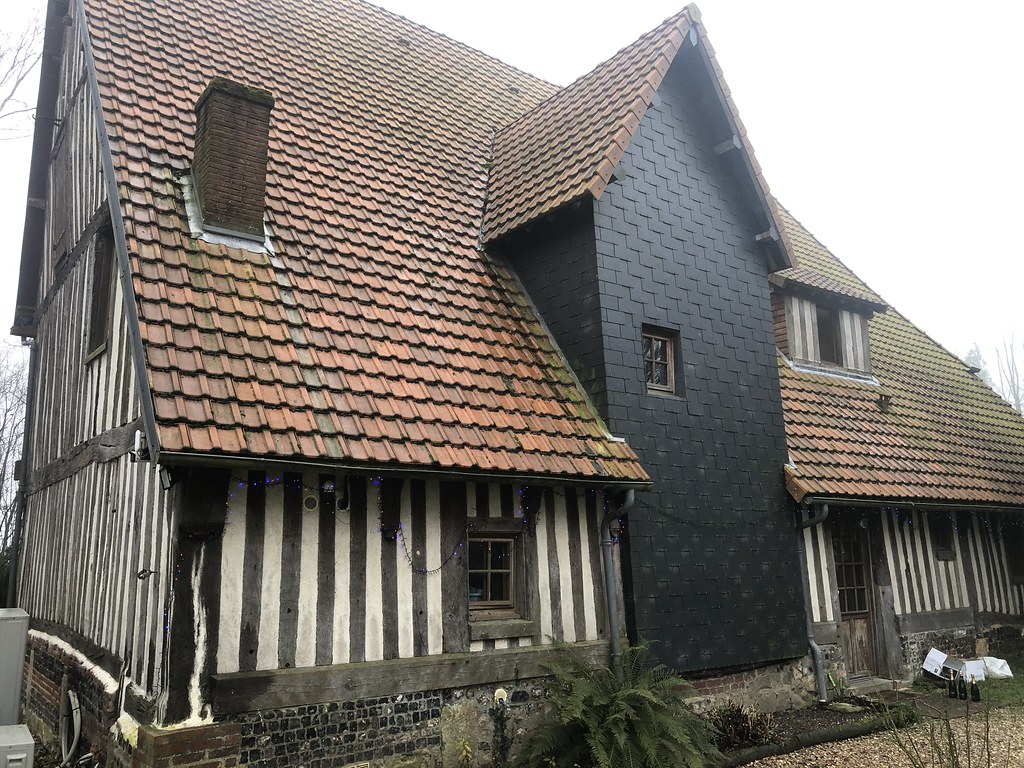Trip date: December 2019
After three wonderful nights spent in Honfleur we were on the move. It was New Year's Eve and we would be spending most of the day driving around seeing some more of the sights of the most northeastern end of Normandy.
We drove 30 minutes north, over the big bridge that spans the mouth of the Seine, and into Le Havre. We were just stopping for lunch, and I think we picked the perfect spot! I'd highly recommend a meal at Le Bistrot des Halles if you are in search of traditional bistro fare with a cute atmosphere and lots of easy street parking.
I started with a bowl of fish soup which is famous in the region, and then had this amazing skate wing in brown butter caper sauce. Cheese to finish, as you do!
Another 30 minutes north, driving along the coast, we arrived in Étretat. We were stopping to view the incredible rock formations, as others have done for hundreds of years. It was an absolutely stunning winter day to view the Porte d'Aval arch and the Chapelle Notre-Dame de la Garde sitting atop the white cliffs.
Really a beautiful area if you are nearby. There are multiple parking lots throughout the town and even though it was a holiday and quite busy, we still found a spot very near the beach. As an added surprise, we ended up randomly running into the friends we would be meeting later that evening, also enjoying the cliffs!
Back in the car it was 20 minutes to our next destination, the city of Fecamp and home of the
Palais Benedictine.
We bought our tickets for a self-guided tour of this over-the-top palace/museum, built by the "inventor" of Benedictine, Alexandre Le Grand.
There are some interesting displays of typical hardware used on homes back in the day, a medieval
Rejuvenation if you will. There is also a lot of stained glass that helps to celebrate himself and his business.
The story of the invention of the herbal liqueur Benedictine is a bit cloudy and a bit fabricated. But basically it was invented in 1863 by Le Grand and a local chemist. Many are led to believe that the spirit was made by monks, which is a bit of a tall tale. The chemist basically riffed on some old recipes he found that had been possibly written by monks. Le Grand embellished the story and saw his sales rise, so he continued on with it.
There is a large hall filled with wonderful photos of Benedictine being bottled and packed for shipping during war times, so you see that all the workers were women. There are also shelves and shelves of the various bottles and labels used over the years.
Our tour also included a chaperoned visit in the distillery and the cellars. It was all pretty interesting and I don't think I've ever visited or learned about a liquor product that had so much "history" made up about it.
We finished with a tasting of both Benedictine on its own as well as a small cocktail made from it. There were a few choices so the three of us tried to mix up our drinks so we could taste them all. And in true Alexandre Le Grand style, the exit is through the gift shop.
It was time to meet our friends who had graciously invited us to spend New Year's Eve at their awesome Normandy farmhouse.
The rest of the night was an abundance of champagne, foie gras, wine, an incredible dinner, and a lot of laughing and singing in a house full of friends ringing in 2020. Quite a bit different than
New Year's 2021 would end up being!
**As I visited all of these places before the COVID-19 pandemic, please double check on opening hours. And fingers crossed these businesses all stay in business!**
All photos of Le Havre, Étretat & Fecamp here.










No comments:
Post a Comment